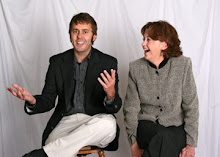
This past summer, Ertel Publishing worked with the creative savants at Nerdy Llama Design & Marketing to revamp not only our company’s website, but also the websites for several of our magazines. The experience was fun and thought provoking, and we are very pleased with the results. In honor of our partnership with Nerdy Llama, we proudly present an interview with one of the chief llamas, Mike Rawers.
Ertel Publishing: In a nutshell, what "is" Nerdy Llama?
Mike Rawers: Nerdy Llama Design & Marketing is the brainchild of Nick Osborne and myself. I have a background in web design and programming, and Nick has a background in motion graphics and online marketing. We're both friends, and we both found ourselves taking on small side projects to keep our skills and minds sharp—and to make a little extra income. So we started a company together, and soon realized that not only are we good at what we were do, but we have fun doing it. And that's important. If you have fun working, you’re going to produce quality work.
For how long has the company been in existence?
We initially started the company as 2020 Media Online in 2005, but in 2008 we changed our name to Nerdy Llama Design & Marketing.
Why "Nerdy Llama"?
The name "Nerdy Alpaca" doesn't really role off your tongue.
Um…
But seriously, folks. I wish I could say that the llama represents our outlook on life, or that it has some very deep personal meaning, but no. We like to think of the llama as the anti-mascot. Also: a llama is not the most useful animal, but throw some glasses on one and it will look pretty nerdy.
Thanks for clarifying. So how would you describe the overall Nerdy Llama web design style?
Only one word comes to mind. "Awesome." For example: it is raining awesome, and I'm the only one outside without an umbrella. I'm completely soaked in it. Everyone else…bone dry.
I don't know how to respond.
[laughs like a monster]
Nerdy Llama recently designed websites for some of Ertel Publishing's magazines. In your mind, what is the ideal relationship between a printed publication, and a website promoting the publication?
Let me say this: publishers should not use a website to reinvent the wheel. Keep your content in your publication. A website can educate people about your publication; it is not there to be an online substitute. A website keep your readers updated and engaged on a daily basis, and allowing them sneak peeks at upcoming issues can increase interest. Publishers can also use websites to increase advertising revenue.
Your company designs online content. Do you think the demand for printed content will ever truly "die"?
Never say die!
Whoa…
Of course news publications are suffering today; it’s just too easy to get up-to-the-minute news online. But I still get excited when I get an issue of my favorite skateboard magazine, or my favorite music magazine, in the mail. There is a certain comfort in being able to hold your favorite publication and saying: “this is mine.”
Consider this statement: websites can generate money, but they aren't generating as much money as people had hoped they would. True or false?
True. Most websites are not fix-all moneymakers. However, websites can help make a good first impression, and a website that sparks interest and engages a customer has one-up on the competition. In the end, a good website can help to increase sales.
How effective is online marketing today?
Online marketing can be extremely effective when coupled with other marketing strategies, and when carried out in the correct manner. People don't need a slick-talking pitchman to tell them how amazing a product is. What people want are opinions and reviews from other people like themselves. Blogs, wikis, and social media networks are perfect starting points when looking for an honest opinion.
Another thing to consider: gone are the days of the groundbreaking email campaigns. Online marketing can be inexpensive, sometimes even free—but how often do you click on a web banner, or read junk mail? It makes sense to couple online marketing with traditional direct mail marketing. You can spark interest with the direct mail piece, and then offer your website as a resource for more information.
You bring up some interesting points that I think potential customers would appreciate hearing. This leads me to my final question: who, or what, is the ideal Nerdy Llama customer?
Businesses and individuals who need the quality, professionalism, and reliability of an in-house design team, but also the flexibility of a freelance designer who can respond quickly to any issue. Since Nerdy Llama is a team of freelance designers, we can easily work with our clients to lower costs and work within their budgets.
You can learn more about Nerdy Llama Design & Marketing at www.nerdyllama.com

